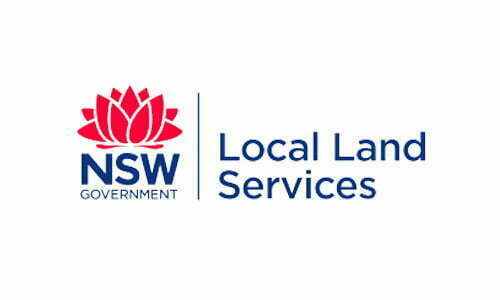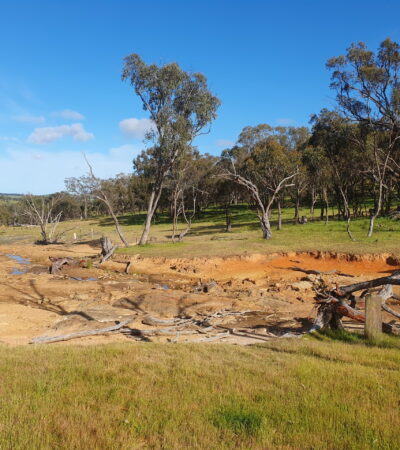On a sunny Saturday on the 10th of May, the Rivers of Carbon team held a second Community Planting Day in Boorowa. Hosted by Tom Glover and his family, the event brought together 25 dedicated volunteers who proved that many hands make light work!
We started the morning with a cuppa, Tim–Tams and a yarn. Tom shared the story of his property, highlighting the importance of sustainable land management practices. His passion for farming and preserving the land for the next generation was inspiring and set the tone for the day ahead.


We then made our way down to a beautiful stretch of the Boorowa River. Tom had already prepared this site, by installing stock fencing and ripping the ground ready for the seedlings. The stock exclusion fence is a vital component of river restoration. It reduces erosion from livestock on the banks of the river, improves water quality and allows our little trees to have a fighting chance.
Rivers of Carbon Project Officer and WaterWatch expert, Jed Pearson, demonstrated the best way to plant a tree to maximise its chance of survival. Volunteers planted each seedling into a shallow well, secured them with tree guards, and gave them their first drink—straight from the Boorowa River. In just a few hours, over 500 trees were planted!
Tree planting is often a selfless act. The results we want often aren’t achieved for many years or generations to come. But, with each tree planted, we are sequestering carbon from the atmosphere, strengthening river banks, improving soils, filtering water, and creating vital habitat for wildlife. As stated by one of our volunteers, it takes at least 50 years for a hollow to develop in a eucalypt tree to create suitable habitat for species like the threatened Superb Parrot. One day, one of these trees could be just that!




The Boorowa tree planting day is just one component of many projects we are proud to be a part of. The Rivers of Carbon team, with the help of landholders and volunteers, is working across the region to restore rivers, creeks and billabongs, reconnecting habitat to ensure our wildlife has a fighting chance for years to come.
We wrapped up the day with a well-earned sausage sizzle. We would like to say a huge thank you to each of our volunteers, who travelled far and wide to help do their bit for the environment! Special thanks Tom and his family for sharing their story and property to make this event happen. Lastly, thank you to the recent rain! Which will ensure our planting day is all the more successful.

This event was made possible with funding from the NSW Government through the Environmental Trust and in kind support from Hilltops Council, South East Local Land Services and Boorowa Community Landcare Group.






What is Rivers of Carbon – Boorowa?
Rivers of Carbon – Boorowa is a project that builds on the work of the successful large-scale Rivers of Carbon Program, a proven model that focuses on connecting and linking ongoing and new riparian rehabilitation sites with remnant vegetation to provide many ecological and social benefits. The Boorowa River is also an important source of water for the district, providing water for agricultural enterprises, recreation, cultural connections and the town. In recent decades the river has been under threat from declining water quality caused by erosion, salinity and vegetation clearing. This project addresses some of these issues by working with farmers to fence water courses, plant native vegetation, establish off stream troughs and remediate erosion sites to improve water quality and biodiversity outcomes.
